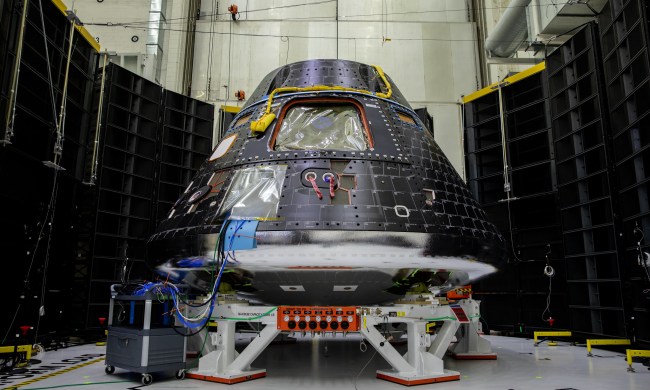NASA officials have confirmed Monday, June 20, as the date for the final pre-flight test of its next-generation Space Launch System (SLS) rocket and Orion spacecraft.
The so-called “wet dress rehearsal” will take place on a launchpad at the Kennedy Space Center and involve engineers filling the boosters with fuel and performing a mock countdown, NASA confirmed in a call with reporters on Wednesday.
The upcoming test is particularly crucial as it follows a failed effort in April when the rehearsal surfaced a number of technical issues that had to be fixed.
Despite the rocket’s development being years behind schedule, and with billions of dollars already spent on the project, NASA chief Bill Nelson is adamant that his team won’t be sending the SLS skyward until it’s absolutely confident of its readiness for flight.
“We are not going to fly until it’s safe,” Nelson said recently. “You can just nail that down. That’s on all spacecraft. That’s why we’ve had delays that we’ve had.”
If no anomalies occur with next week’s rehearsal, NASA will be clear to launch the SLS on its first test mission, called Artemis I, possibly as early as August. The uncrewed flight will involve the SLS rocket powering the Orion capsule toward the moon, where it will perform a flyby of our nearest neighbor before returning home.
This is just the beginning 🚀🌕 pic.twitter.com/UZFCHLROnY
— NASA's Kennedy Space Center (@NASAKennedy) June 15, 2022
A successful Artemis I mission will pave the way for the crewed Artemis II flight in which the Orion will follow the same route around the moon.
Following that, the highly anticipated Artemis III mission will endeavor to land the first woman and first person of color on the lunar surface in what will also be the first moon landing since the Apollo 17 mission in 1972. NASA isn’t yet in a position to offer a firm date for the launch of Artemis III, though it’s currently eyeing no earlier than 2025.
The Artemis program heralds a new era in human exploration of the moon, and part of the goal is to build a permanent lunar base for extended stays. The effort is seen as a stepping stone to the first astronaut mission to Mars, which the space agency suggests could take place in the late 2030s.


